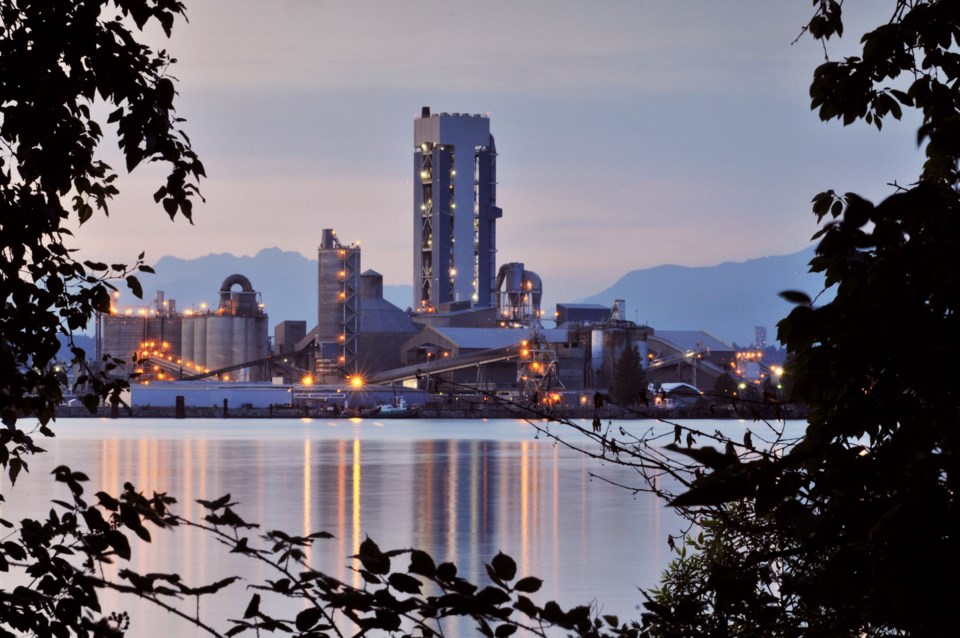With a grant from the provincial government for $14 million, Lafarge Canada Inc.’s Richmond Cement Plant has launched a new lower carbon fuel system aimed at reducing greenhouse gas emissions in its cement production.
Lafarge has been building a “small plant within a plant,” a series of several machines, over the past year at its cement manufacturing facility on Westminster Highway and No. 9 Road in east Richmond, explained plant manager Pascal Bouchard.
Lafarge’s new fuel handling and delivery system is expected to replace up to 50 per cent of the plant’s fossil fuel use with lower carbon fuels. This could result in a 20-per-cent reduction of combustion emissions. The project cost $28 million of which Lafarge received half from the provincial Ministry of Environment.
To operate the new carbon-efficient system, Lafarge works with recyclers and takes anything they cannot repurpose and burns it at 2,000 degrees Celsius to fuel their cement kiln.
“There’s always some leftovers they can’t do anything with,” Bouchard explained to the Richmond News. “We’re a solution for what recyclers can’t recycle.” This includes wood waste, nylons pieces from recycled tires, the unrecyclable parts of old mattresses and plastic that can’t be made into new products.
Traditionally, cement manufacturers, of which there are 13 in Canada, use fossil fuels to heat their kilns, for example, natural gas, coal or petcoke, Bouchard said.
The initiative aims to make the facility the most carbon-efficient cement plant in Canada. It will also help minimize landfill waste, specifically, non-recyclable plastics, diverting about 100,000 tonnes of waste from local landfills per year, the equivalent of about 8,300 loaded garbage trucks.
The low-carbon fuel system is in its commissioning phase whereby Lafarge workers are starting it up and learning how to use it, Bouchard said.
“With an ever-growing population, using waste as a source of energy is the future of waste management and recycling. It offers superior environmental performance compared to landfill and incineration of waste and significantly reduces greenhouse gas emission from cement production,” said Sophie Wu, head of Geocycle North America, LafargeHolcim’s waste management subsidiary, in a press release.
The 60-year-old Richmond Cement Plant, Lafarge’s first Canadian facility, has been permitted to use lower carbon fuels for 10 years. Previous upgrades allowed the plant to achieve 25-per-cent substitution. This investment by Lafarge and funding from the British Columbia Cement Low Carbon Fuel program makes the new system economically viable.



